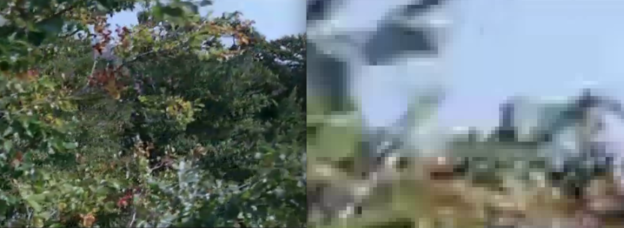SEQUENCE Four: Analogue-Digital (2016-present)
- NEW! Paul Atkinson, ‘THINKING WITH DIGITS: Cinema and the Digital-Analogue Opposition’, SEQUENCE, 4.1, 2016. Online at: https://reframe.sussex.ac.uk/sequence4/archive/sequence-4-1/.
The digital and analogue are always co-present in every film and this co-presence operates at a number of levels from the composition of the film to spectatorship. […] These issues extend well beyond the appreciation of film and in many ways are at the very centre of humanities research where we must always ask, to what degree do we insert ourselves into the temporal particularity and haecceity of the world and to what degree do we reconstruct the world as data.
We are delighted to present the latest issue of SEQUENCE: Serial Studies in Media, Film and Music, REFRAME‘s experimental, peer-reviewed, and sequential edited-collection format.
SEQUENCE Four: Analogue-Digital offers its readers, and potential interlocutors, space for reflection on, and discussion of, notions of the ‘analogue’ and the ‘digital’ in relation to media (and other) cultures. The inaugural contribution to this issue, and to this topic, is by Paul Atkinson, a specialist in the philosophy of science, media theory and visual culture, based at Monash University in Melbourne.
Atkinson’s essay for SEQUENCE—’ ‘THINKING WITH DIGITS: Cinema and the Digital-Analogue Opposition’ (4.1 [2016])—offers a compelling exploration of what is at stake when we deploy these, now binary terms. He sets out to clarify the representational differences between them, among other distinctions:
It is often pronounced that we live in a digital age and that our social and aesthetic beliefs are underpinned by the concept of digitality. But when a term is used to herald a broad cultural change it loses much of its specificity and critical purpose. The digital becomes a shibboleth of the new and its counterpart, the analogue, a locus for nostalgia and a presumed indexical connection with the real. We are at a point now in the study of media and cinema, when it is important to rethink both the analogue and the digital if they are to continue to have any critical value. This is not a plea to limit discussion to technological affordances, for the terms precede the many recent technologies to which they are applied. Rather it is a call to reconsider the digital-analogue distinction as a mode of representation and how this might apply to cinema. This is not just a matter of providing a clear definition in the manner favoured by philosophy, because any theoretical repositioning has to bear some relationship to the material, aesthetic and spectatorial aspects of cinema. The representational differences must affect the way we watch films as well as provide a means for understanding distinct filmmaking practices. In short, it is about redeploying the analogue-digital distinction as a mode of thinking in cinema – in terms of both reason and aesthetics – that extends well beyond the application of specific technologies.
As usual, as we are sequentially inviting responses to the first entry in this iteration of SEQUENCE, Atkinson’s article also constitutes a Call for Contributions for further Analogue-Digital sequences. If you’re inspired to respond, especially if you have research work in progress on any of the topics raised by his essay, and/or the SEQUENCE title, in relation to any relevant cultural or communications medium (not just cinema or audiovisual media), please get in touch with us at SEQUENCEserial[at]gmail[dot]com. Multimedia responses of all kinds are also very much encouraged. But it would be worthwhile to discuss any substantial idea with us at an early stage in your planning. All contributions need to comply with UK copyright law and the current understanding of fair dealing. Contributors should note that their submissions will be formally peer-reviewed. But there are no editorial prescriptions on length or content, except that your work should be some kind of ‘sequential response’. If you don’t want to take part right away, you can still enter the ‘chain’ of responses later on.
If you’d like to offer a more concise response, there is also the option of leaving a comment in the moderated stream at the foot of each SEQUENCE Four entry. SEQUENCES may be long and short in all sorts of ways.
Catherine Grant
SEQUENCE Four is being co-edited by Catherine Grant (founder and—with Russell Glasson and Katherine Farrimond—co-editor of the SEQUENCE project), with Russell Glasson and Tanya Kant.

